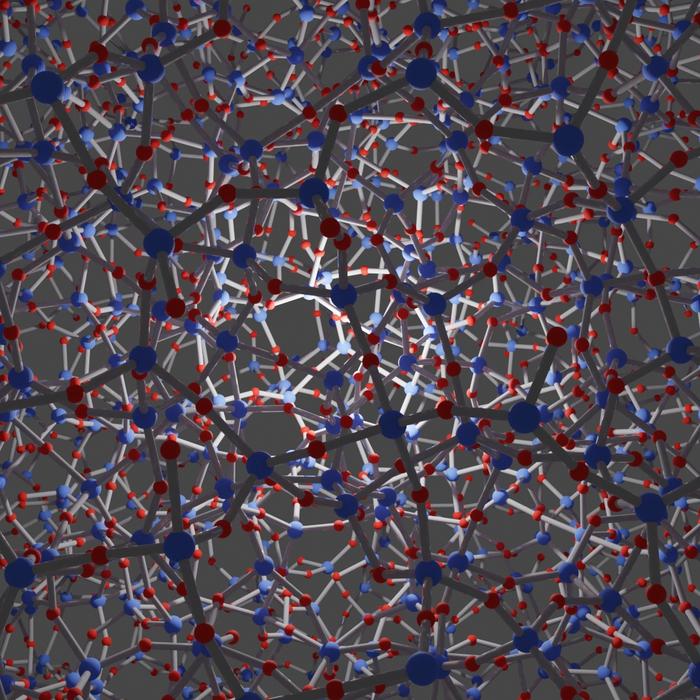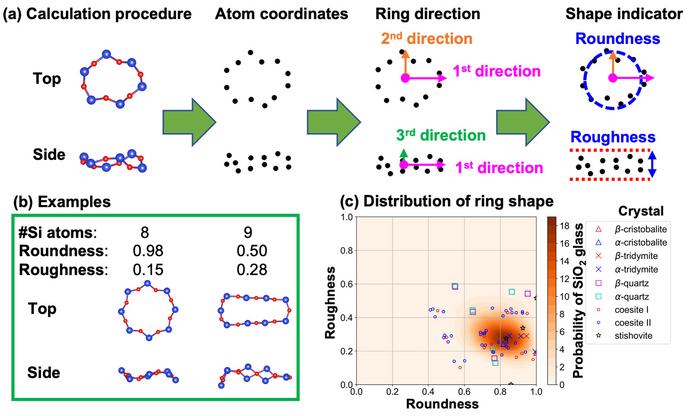From Tohoku University 30/11/23

Glass is a fundamental material used in insulation and in the screens of computers and smartphones.
Despite its long history, the disordered atomic structure of glass is still not fully understood by scientists.
This lack of understanding makes it difficult to control glass’s structural properties and design efficient materials.
A research group, including Professor Motoki Shiga from Tohoku University, has studied the ring shapes in glass’s chemically bonded networks.
They developed new methods to quantify these rings’ three-dimensional structure and symmetries, termed “roundness” and “roughness.”
These indicators helped identify specific ring shapes in crystalline and glassy silica (SiO2), including some unique to glass.

The researchers also created a technique to measure spatial atomic densities around these rings.
They discovered anisotropy around the rings, indicating non-uniform atomic configuration regulation.
This finding aligns with experimental evidence like the diffraction data of SiO2.
It showed that, in some areas, there is a degree of order in the seemingly chaotic atomic arrangement of glassy silica.
Shiga notes that the structural unit and order beyond chemical bonds, long assumed in experiments, have now been identified.

Their analysis aids in understanding material phase-transitions and provides mathematical descriptions for controlling material structures and properties.
Shiga and his team plan to use these techniques and data-driven approaches, including machine learning and AI, to further explore glass materials.



